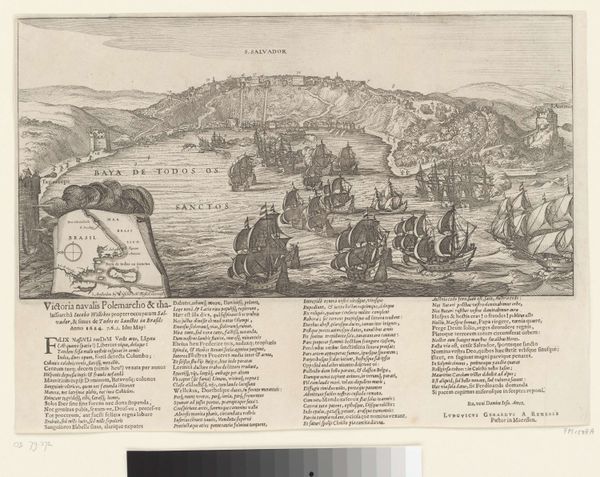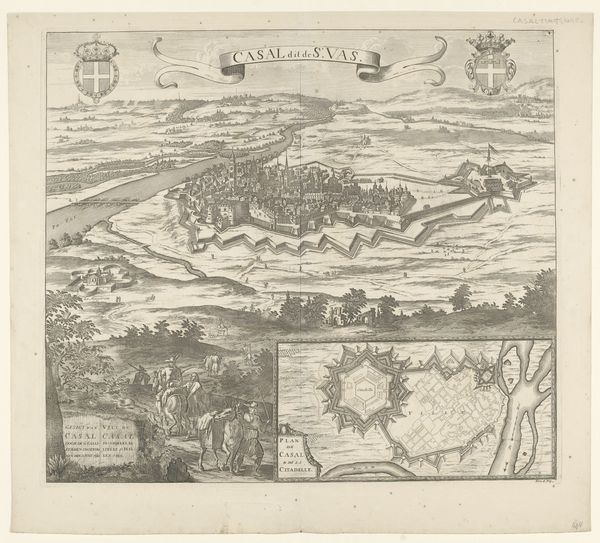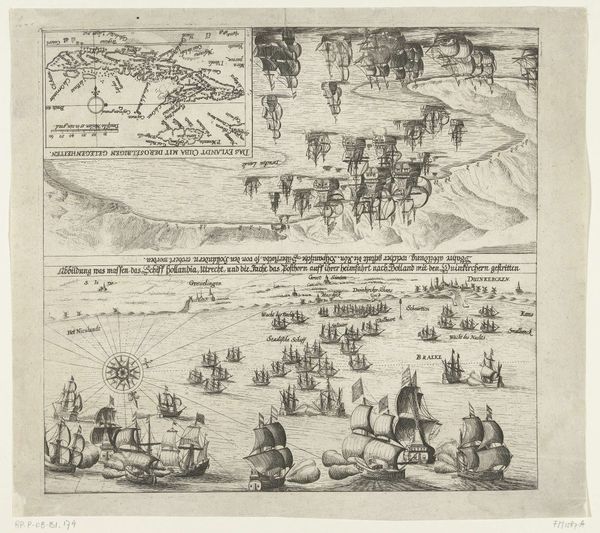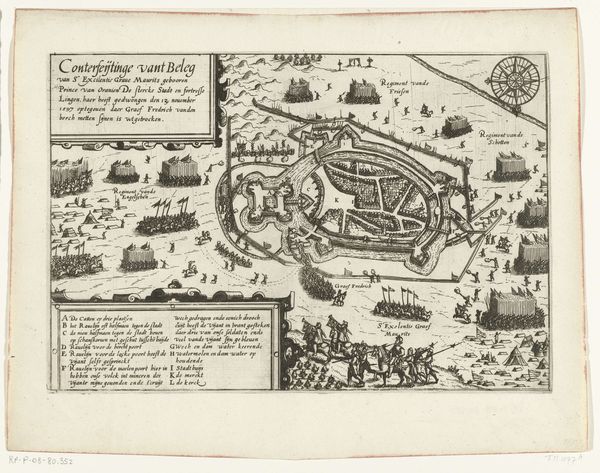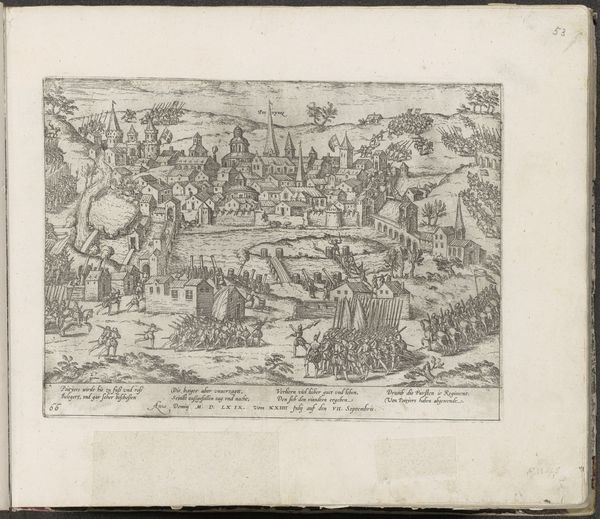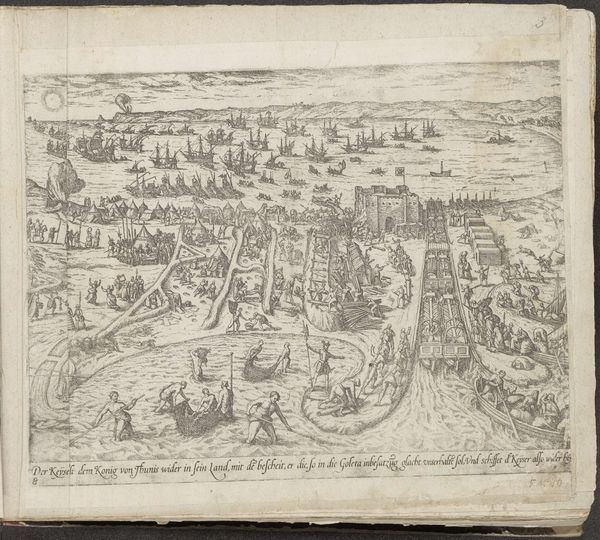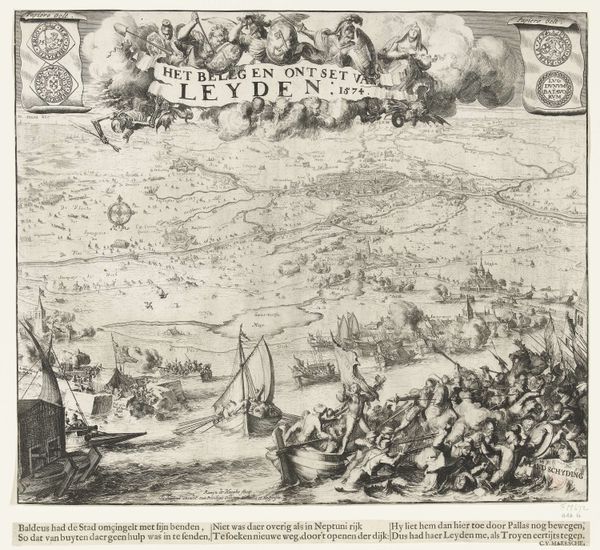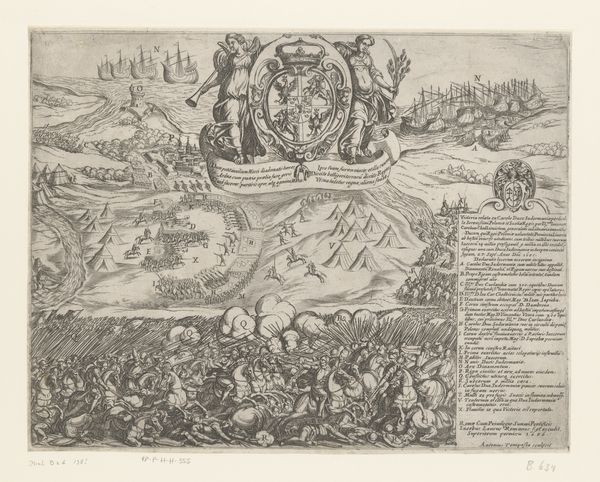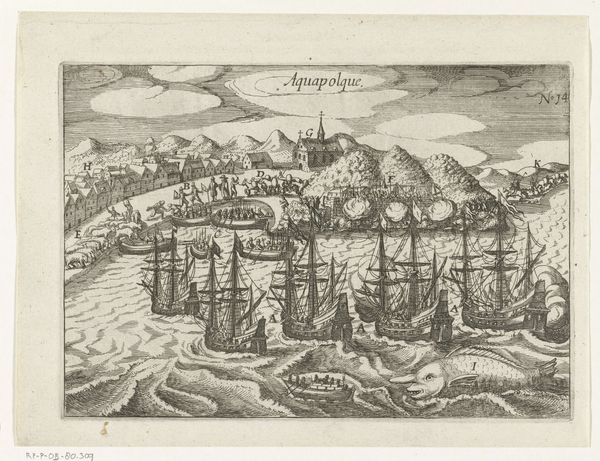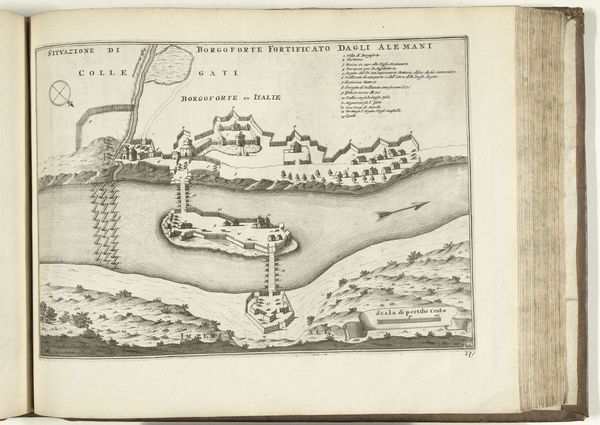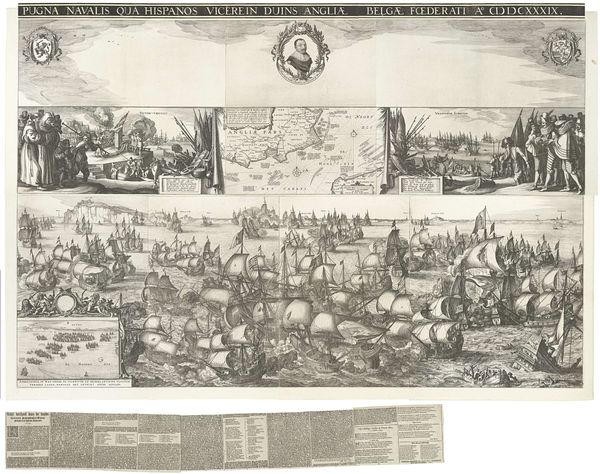
Verovering van San Salvador in Brazilië door admiraal Jacob Willekes, 1624 1624 - 1649
0:00
0:00
print, engraving
#
baroque
# print
#
landscape
#
cityscape
#
history-painting
#
engraving
Dimensions: height 276 mm, width 353 mm
Copyright: Rijks Museum: Open Domain
Curator: Here we have an engraving from the period of 1624 to 1649, "Verovering van San Salvador in Brazilië door admiraal Jacob Willekes, 1624." It’s currently held in the Rijksmuseum. Editor: My first impression is one of meticulously organized chaos. The composition, even with its detailed rendering of ships and buildings, feels a little frantic, yet compelling, almost like a document of...power and expansion. Curator: Yes, a visual document meticulously etched into the copper plate. The medium, engraving, is crucial. It allowed for wide distribution and served as propaganda as well as news, of the Dutch West India Company's activities, which in this case, celebrates the brief conquest of Salvador. Consider the labour, and time needed to create such detail using this exacting technique of incising lines and removing material. Editor: And think of what Salvador itself meant then – a bustling, contested port city. The ships, bristling with symbolic might, dominate the harbor. It's an assertion of dominance through maritime strength. I see the symbols of power being planted both on water and land, signaling occupation and new rule. Curator: It reveals much about Dutch ambition during that time. These images, these printed documents, fueled both public interest and provided incentive to the commercial class. Think about the supply chains needed to even undertake such expeditions, or simply for the trade and consumption facilitated as the product of colonial pursuits. Editor: Indeed. The landscape itself feels secondary, subjugated by the events unfolding in the water. Even the 'Bay of All Saints,' written at the bottom of the frame. feels ironic considering the violent activities. Those two Churches that peek over the city skyline are then recontextualized in violence, not prayer. Curator: I see it similarly: this engraving embodies not only the event but also the era's focus on documenting every venture for economical and strategic purposes. That relentless accumulation of symbolic data serves as part of an industry that depended on material conditions in ports of calls for goods, labor and trade. Editor: It really pushes one to ponder both the factual depiction versus idealized glorification and symbolic ambition that such a work represents. Curator: It underscores how art becomes entwined with, and a tool within, a system of power. Editor: Agreed; a potent lens into the complex web of history, conflict and symbolism.
Comments
No comments
Be the first to comment and join the conversation on the ultimate creative platform.

